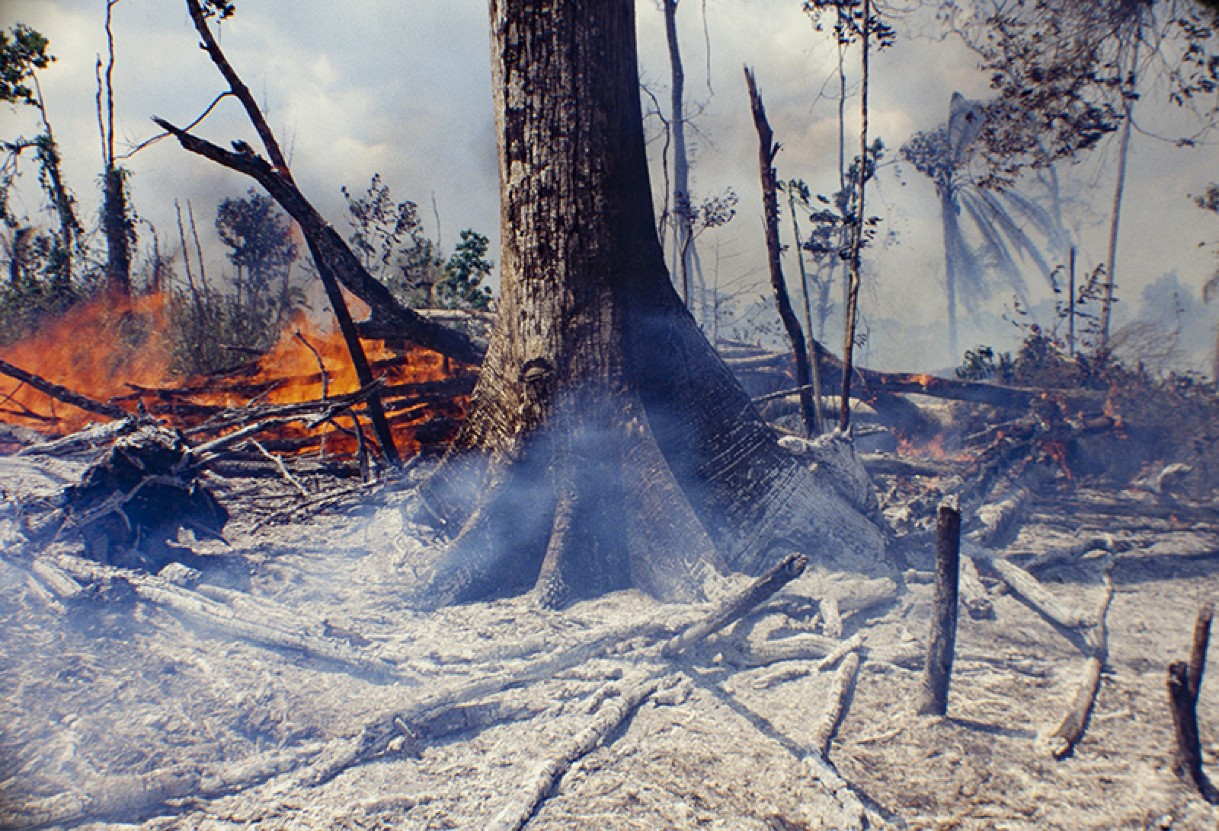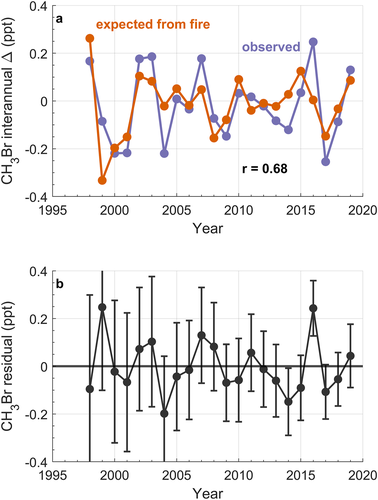Fires are driving short-term spikes in an ozone-depleting gas
By Xinyi Zeng (xinyi.zeng@noaa.gov), Science Communications Specialist,
New research reveals global wildfires as an important cause of the short-term spikes in the atmospheric abundance of a potent ozone-depleting chemical, methyl bromide.
Since 1999, the Montreal Protocol has phased out most anthropogenic production of methyl bromide. As a result, atmospheric concentrations of methyl bromide have been declining. However, scientists have detected mysterious inter-annual variations in atmospheric methyl bromide concentrations.
“We first found a strong correlation between the growth rate of atmospheric methyl bromide concentrations and the El Niño Southern Oscillation, also known as ENSO,” said the lead author Melinda Nicewonger, NRC Postdoctoral Fellow at Global Monitoring Laboratory. “At the same time, we knew that the occurrence of global wildfires is linked to variations in ENSO.”
Using surface measurements from NOAA’s global air sampling network and an analysis of methyl bromide emissions from numerous sources, Nicewonger and her colleagues attributed 46% of the year-to-year variation of atmospheric methyl bromide abundance to global fires.

The same research team also published a new paper on the global methyl bromide budget, using the same ocean/atmosphere model.
Previous research had identified a gap between known sources and sinks of this potent ozone-depleting gas. However, the last budget assessment happened in 2009, and scientific knowledge of ocean/atmospheric processes has advanced since then.
“In this new model, we used high spatial and temporal resolution ocean wind data and an updated parametrization for the air/sea flux transfer of methyl bromide,” said Nicewonger. “This allows us to better model the gas transport processes between the ocean and atmosphere.”
The authors found an imbalance between the model-derived emissions and the bottom-up estimates of sources at 20 Gigagrams per year, 35 percent smaller than previously reported.

A persistent source is identified primarily in the tropics, likely originating from natural vegetation. A smaller time-varying source was found to scale with the anthropogenic source during the production phase-out, suggesting the possibility of anthropogenic emissions being slightly underestimated in the past.
The results of these two studies narrow the gaps in our quantitative understanding of the processes that influence the atmospheric concentrations of methyl bromide. Furthermore, they highlight the value of the global atmospheric monitoring network in estimating the emissions and variations of ozone-depleting chemicals and assessing the effectiveness of international environmental agreements.
Global Monitoring Laboratory scientist Stephen Montzka is a co-author of both papers and Eric Saltzman from UC Irvine’s Department of Earth System Science is the lead author of the budget study. NOAA Pacific Marine Environmental Laboratory developed the NOAA COARE model of trace-gas air-sea exchange processes that was adopted in these two studies.
